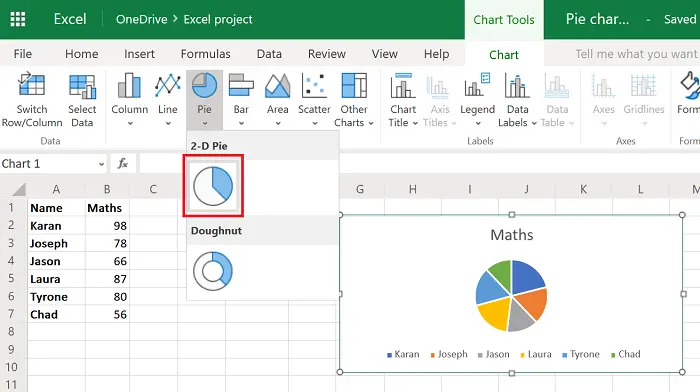


Select the data that you want to plot in the doughnut chart. In the worksheet, select cell A1, and press CTRL+V. Note: Do not select the row or column headers. Open the worksheet that contains the data that you want to plot into a doughnut chart, or copy the example worksheet data into a blank worksheet. You can copy this data to your worksheet, or you can use your own data. For this chart, we used the example worksheet data. So, how did we create this doughnut chart? The following procedure will help you create a doughnut chart with similar results. Top of Page Create an elaborate doughnut chart If percentages are displayed in data labels, each ring will total 100%.Įxploded Doughnut Much like exploded pie charts, exploded doughnut charts display the contribution of each value to a total while emphasizing individual values, but they can contain more than one data series.ĭoughnut charts and exploded doughnut charts are not available in 3-D, but you can use 3-D formatting to give these charts a 3-D-like appearance.

When you create a doughnut chart, you can choose one of the following doughnut chart subtypes:ĭoughnut Doughnut charts display data in rings, where each ring represents a data series. The categories represent parts of whole in each ring of the doughnut chart. You don't have more than seven categories per data series. None of the values that you want to plot is a zero (0) value. None of the values that you want to plot is negative. You have one or more data series that you want to plot. Displaying values or percentages in data labels is very useful in a doughnut chart, but if you want to compare the data points side by side, you should use a stacked column or stacked bar chart instead. The proportions of outer rings and inner rings do not represent the size of the data accurately - data points on outer rings may appear larger than data points on inner rings while their actual values may be smaller. The first data series is displayed in the center of the chart.īecause of their circular nature, doughnut charts are not easy to read, especially when they display multiple data series. Each data series that you plot in a doughnut chart adds a ring to the chart. Just like a pie chart, a doughnut chart shows the relationship of parts to a whole, but a doughnut chart can contain more than one data series. Learn more about plotting data in a doughnut chartĭata that is arranged in columns or rows only on a worksheet can be plotted in a doughnut chart. Note: Beginning with Office 2016, doughnut charts are discontinued in favor of starburst charts.


 0 kommentar(er)
0 kommentar(er)
